When I demonstrate diaper pattern couching, people always ask if I have the complete pattern in my head somehow as there is nothing drawn or printed on the fabric. And even with my explanation, people don’t always fully understand how it is done. Not even embroiderers familiar with cross-stitch embroidery. And those embroiderers who know how it is done, are not always comfortable working a new pattern as they have trouble ‘reading’ the notation on paper. So, let me explain how I do it.
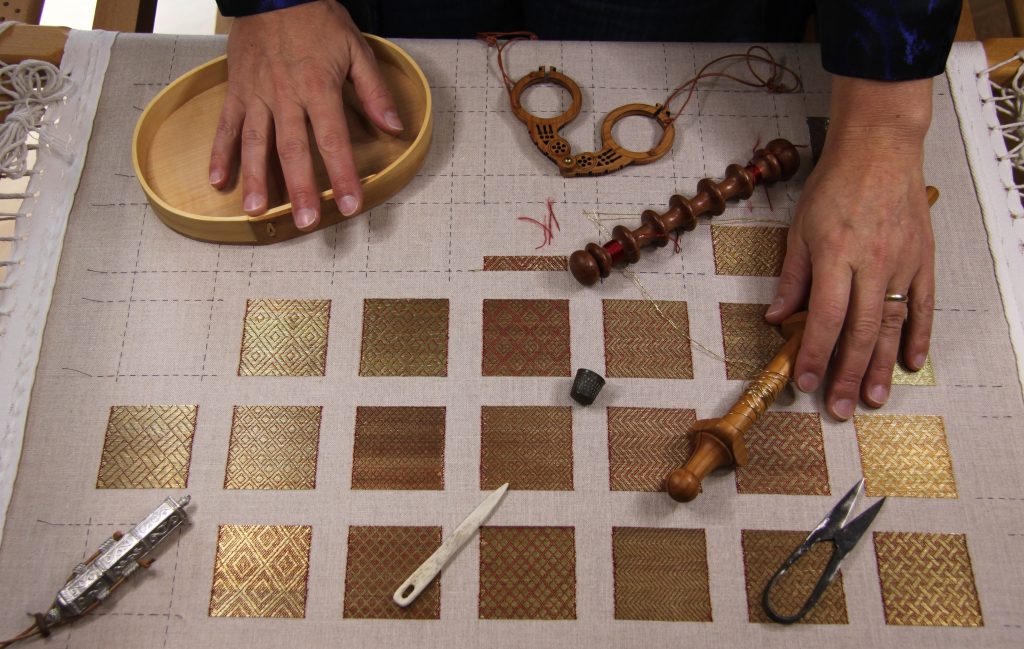
To try your hand at diaper pattern couching you will need a finer (I use 40 ct to 48 ct) even-weave linen mounted on a slate-frame. Try to avoid other set-ups such as hoops or roller frames. You really need a drum-taut result that will stay put for the duration of the work. You can find a video-tutorial on setting up your slate frame here.
You will also need gold thread. Both, passing thread (I use #3 to #6) and Japanese gold (I use #8 and #12) are suitable for the technique. As diaper pattern couching is mostly a counted technique (it is sometimes eye-balled), the thickness of the gold thread in relation to your background fabric is not completely unimportant. Theoretically, when two parallel gold threads correspond perfectly to a ‘full’ number of fabric threads, you get the smoothest surface with no gaping between the rows of gold thread. However, you need space for your couching thread too. And likely, thread tension plays a role too. And then there’s the odd thicker or thinner thread in your linen, too :). From my experience, it is rather individual what works best for a stitcher. If you find that you keep struggling with properly spacing your gold threads, i.e. no crowding and no gaps either, try changing the fabric count or the thickness of your gold thread.
As gold threads are shiny, you get the best results when you use a shiny couching thread. I love working with untwisted Chinese flat silk. It is good quality and the thread can be split to however fine I need it. You can use any colour you like. Red is most prevalent during the Middle Ages. Yellow is also used. However, this is very hard on your eyes as there is little contrast with the gold. Green, blue and purple are never used.
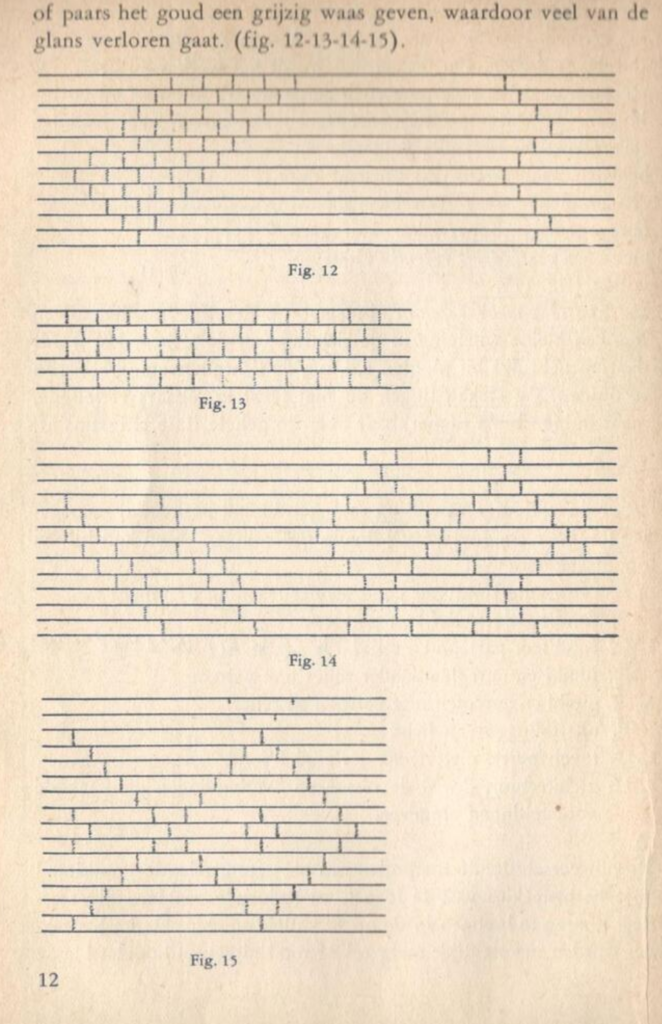
To do diaper pattern couching, it is really helpful to start thinking about your linen fabric as if it was a canvas for needlepoint, i.e. a grid. Instead of counting threads, you will be counting holes. I found the notation that I use for diaper patterns in a Dutch book from 1948 (Jansen, B.M., 1948. Laat Gotisch Borduurwerk in Nederland. L.J.C. Boucher, Den Haag).
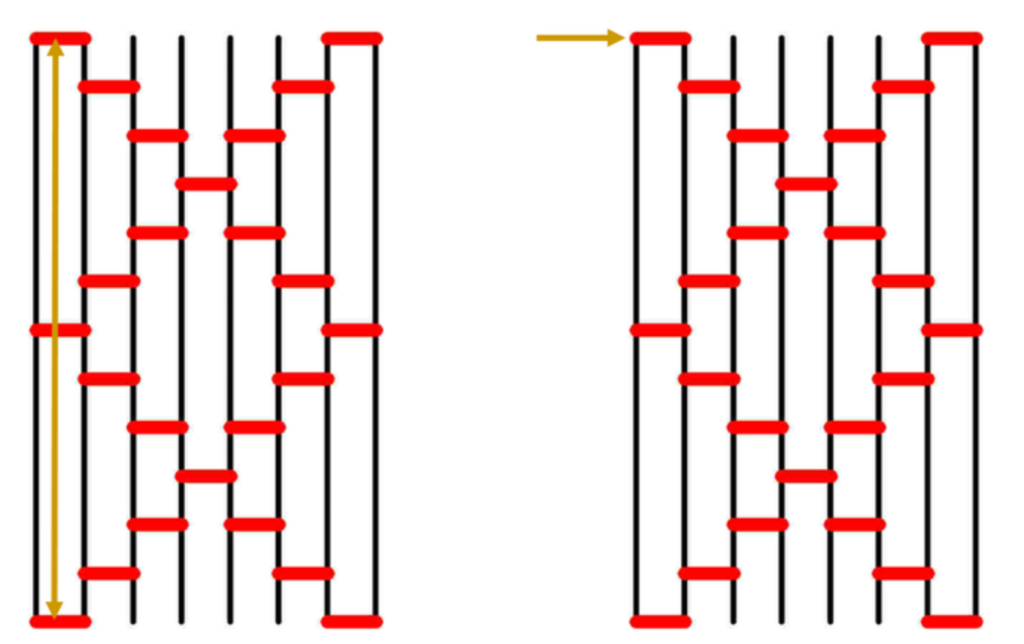
In this diaper pattern couching pattern, the gold threads are represented by horizontal or vertical lines running the full width/length of the pattern. The couching stitches are the short dashes that cross the gold threads at right angles.
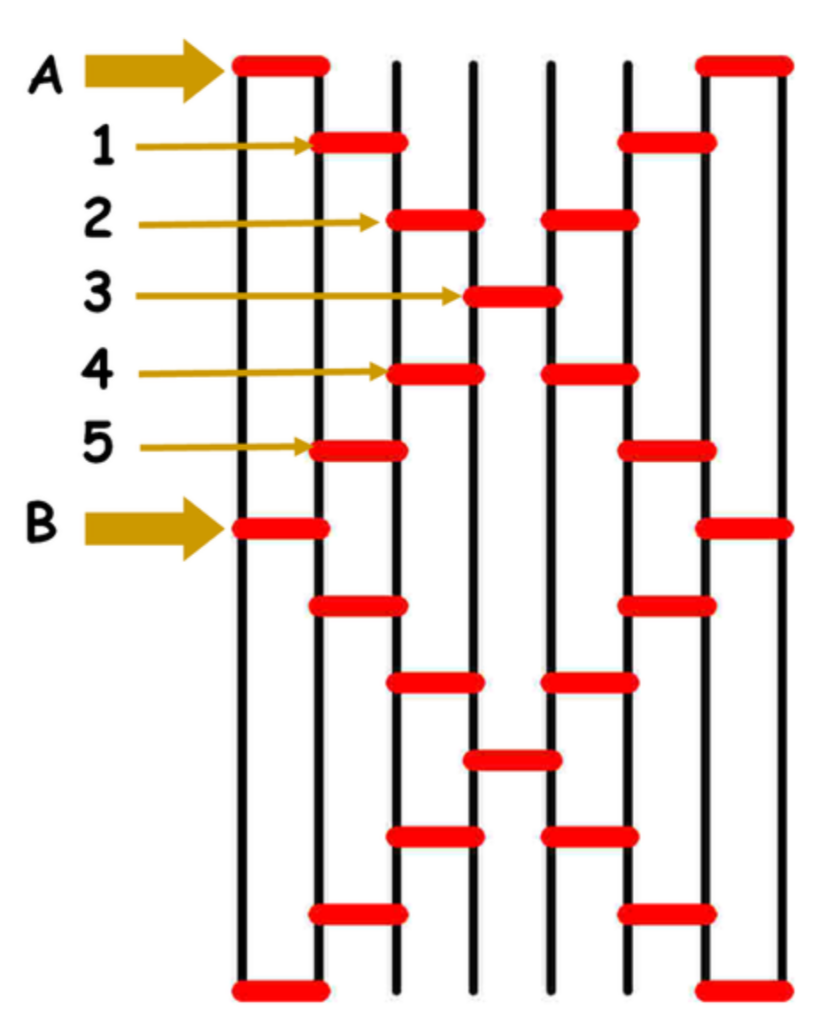
When looking at the diaper pattern notation, you might wonder how you know how many holes there are between the consecutive couching stitches. You need to look to the rest of the pattern to find out.
When choosing a pattern for your project, keep in mind that complex patterns leave more room for error and are slower to work. A pattern with many couching stitches is also slower as a pattern with fewer stitches. And last but not least, larger patterns only really work in a larger, uninterrupted space. Making a sampler with many different patterns is both fun to work and an asset on your wall. Smaller patches can easily be turned into Christmas ornaments or very fancy coasters. The possibilities are endless!
Ready to try your hand at diaper pattern couching? My Journeyman and Master Patrons find a downloadable PDF with these instructions and 18 diagrams of medieval diaper patterns on my Patreon site.
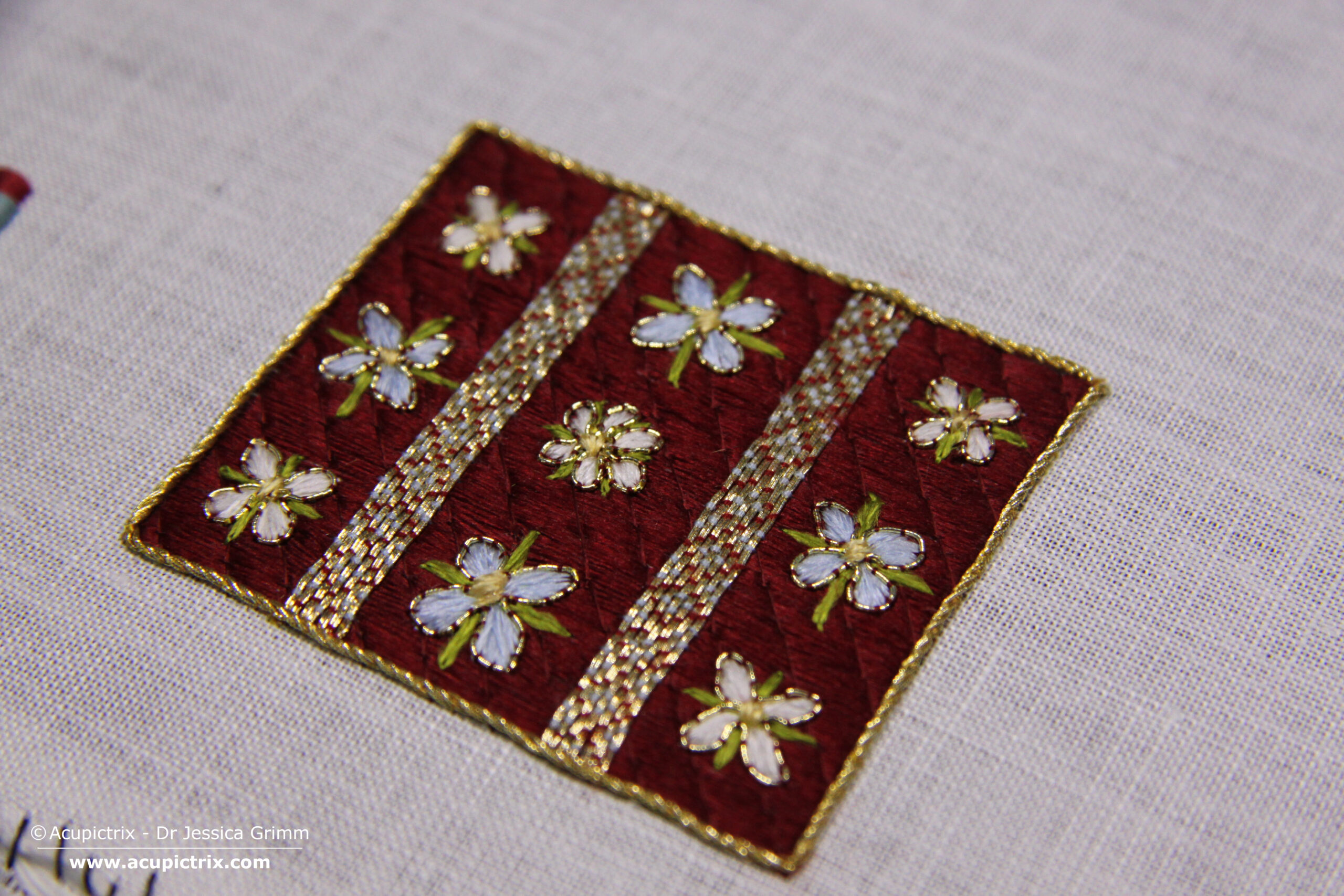
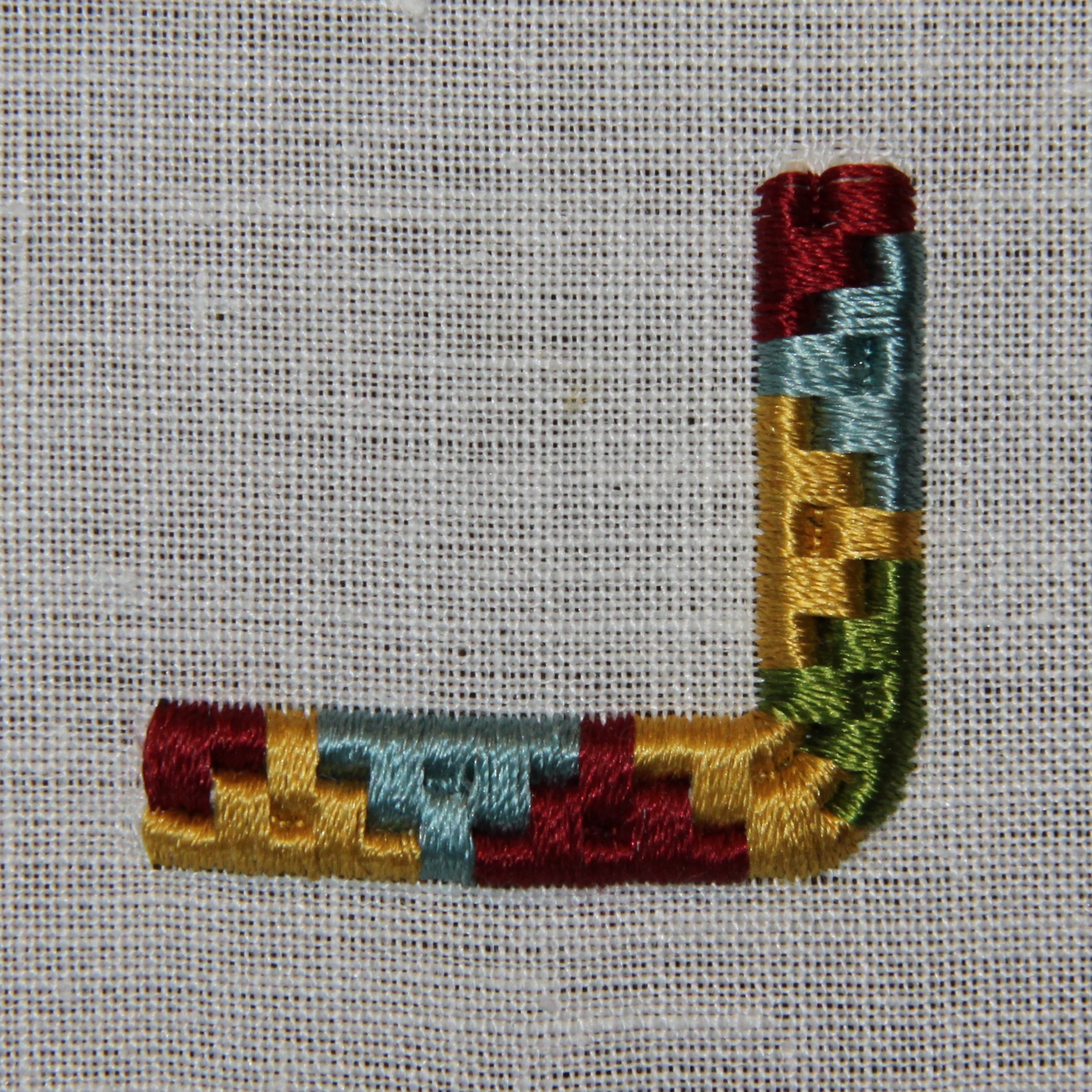

0 Comments